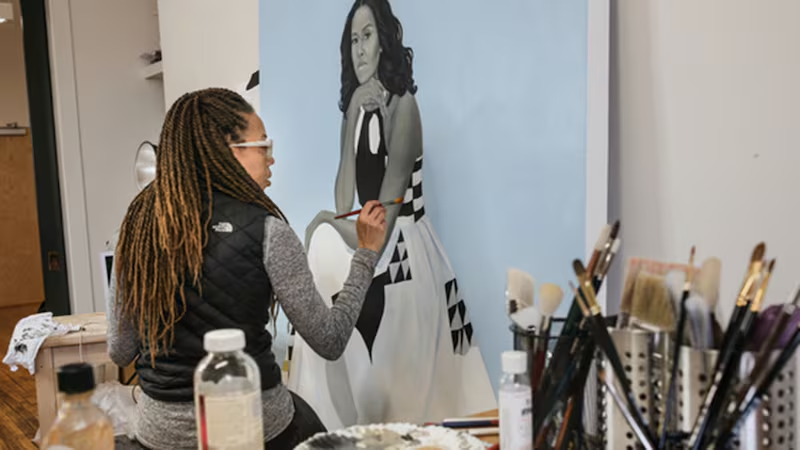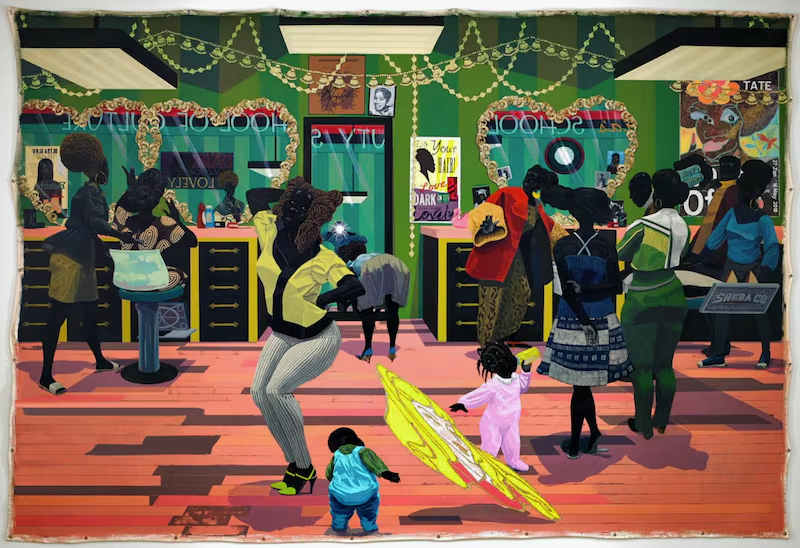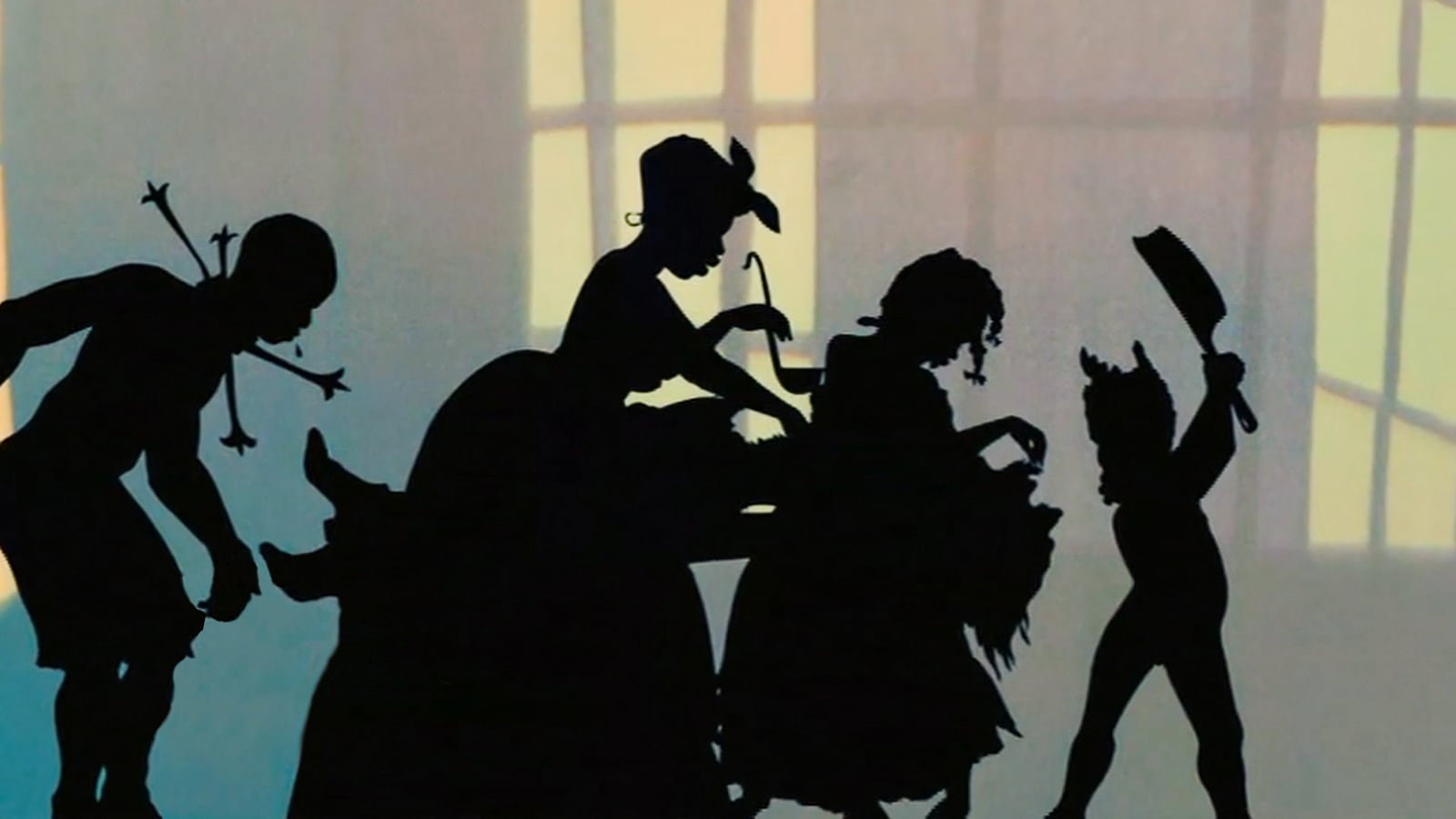In her 2020 novella The Office of Historical Corrections, writer Danielle Evans pinpoints “the daily trauma of the historical record, the sometimes brutality and sometimes banality of antiblackness.” The framing of the past—riddled with omissions and injustices—requires endless reckoning, and even then, it will never faithfully reflect reality.
The “brutality and banality of antiblackness” is something art historian David C. Driskell actively challenged. He was the curator, in 1976, behind “Two Centuries of Black American Art,” a seminal survey of 63 Black artists that worked in counterpoint to the art historical disregard for Black artistic expression. Some 200 works were presented at LACMA, traveled to art institutions in Dallas and Atlanta, and concluded their circuit at the Brooklyn Museum.
A new HBO documentary that airs tonight, Black Art: In the Absence of Light, includes archival footage of Tom Brokaw interviewing David E. Driskell about the exhibition. It’s a fitting place to start because, in a sense, Black art history got its toehold in the American cultural dynasty through Driskell’s pioneering show.
“When one says ‘Black art,’ it more or less isolates the Black artist from the mainstream,” Driskell told Brokaw. He clarified that this penning away is not self-appointed, it is inflicted: “The Black artist has not attempted to set himself apart: he has tried to be part and parcel of the mainstream.”
“But aren’t you setting him apart in effect by putting the show together with just Black artists?” Brokaw queried.
“Only because he has not had an audience with majority culture for the most part,” Driskell volleyed back. “Had this exhibition not being organized, many of the artists who are shown here never would have been seen.”
The documentary shows that the racism Black artists (and historians) experienced lay in not having their work valued at all. Black artists created independently outside the art “system,” rather than being included in institutions or commanding blockbuster sales figures on a par with white contemporaries. Modern activism and shifting cultural conversations have had a profoundly positive effect. Black artistic production has not necessarily changed, per se, but the way it is perceived by the art world has.

Amy Sherald painting Michelle Obama's portrait.
via HBOThelma Golden, a consulting producer and director and chief curator of The Studio Museum in Harlem, in a panel about the film, described the way the racist exclusion of Black artists shifted over the years.
The Studio Museum was founded to create a platform for Black artists: It was space that simply didn't exist in other institutions. “Do we still need it? Well, we need it in different ways,” Golden said. “There’s a lot of expansive possibility in cultural specificity, and there’s a lot of amazing work that gets done when we dive deep into the depths of the culture.”
Creating space amidst majority culture is the corrective measure marginalized communities resort to when their visibility is wildly skewed or absent altogether. It’s a matter of necessity to compensate with new optics. Driskell declared, “I had a chance to really say: ‘This is something that ought to be done because the American canon is not complete without it.’”
The artistic canon is a powerful vector in championing not just aesthetics but social representation and cultural heft. Rarely are we as reverent—or as impressionable—as before a work of art. The oversights of art history formulated by privilege and whiteness and maleness are being actively reshaped today: The revising of symbolic value and market hierarchies is slow but in process. Black Art: In the Absence of Light meditates on what such new considerations within the sector should be.
The film was directed by Sam Pollard, a veteran documentarian of the Black experience who has shined a spotlight on the first Black mayor of Atlanta and the post-Katrina devastation of New Orleans. Just last month, the release of his film MLK/FBI drew high praise.
The role of a director, more specifically a documentarian, wrestles with the nature of visibility. But Pollard’s impetus for making movies is underpinned by the desire for self-expression, not activism. “For me, the process of making a film is shaped by first wanting to create,” Pollard explained via email, “and then to consider the political and social ramifications.” It’s human nature to want to generate a story, first and foremost.

"Untitled (Studio)," Kerry James Marshall, 2014
via HBOPollard interviews a range of contemporary Black luminaries—academics, curators, collectors—and artists, of course, both celebrated and emerging. These include Amy Sherald (who did the official portrait of First Lady Michelle Obama) and Jordan Casteel (whose painting recently covered an edition of Vogue), plus Carrie Mae Weems, Kehinde Wiley, and Hank Willis Thomas, amongst others.
In a way, the film helps cement a new art historical canon. For Pollard, it’s unofficial, however. “It’s always tricky trying to figure what folks to include in your film,” he admitted. “My first thought was, does the artist's work move me, and then second reaching out to them do they want to participate.”
Black identity has been presented in many different forms in artists’ work. Driskell described painter Kerry James Marshall as having the “audacity” to focus exclusively on “ordinary” Black life when he was starting out many decades ago. (Today, that audacity has literally paid off: Marshall’s work is the most expensive by a living African American artist—his canvas “Past Times” was purchased, in 2018, for over $21 million.)
By contrast, Kara Walker is praised for her “willingness to go into the kind of underbelly of the neo-Confederate narrative… through forms that disturb, that command, and that reshape our understanding of Black life and white Americans in this country.”
Whatever, Black voices need to be the ones to tell Black stories. Almost a decade before “Two Centuries,” the Metropolitan Museum of Art hosted an exhibition “Harlem on My Mind.” This attempt to “highlight” Black culture resulted in an anthropological othering, rather than faithful artistic representation. (It was—surprise!—overseen by a white curator.)
Critic Holland Cotter recalled that the exhibition was “reviled as culturally patronizing.” As Kasseem Dean, known professionally as Swizz Beatz, an avid collector in his own right, said in the documentary, “We hate the way other people tell our story—there’s always flaws in it, because they didn’t live it.”
The film highlights that part of the work of strengthening Black visions is to rigorously credit Black influences, thus firming up a Black artist legacy. “We’re part of a continued Renaissance,” artist Theaster Gates said in the documentary. “It’s been happening.” Radcliffe Bailey noted, “It’s important for us, those that are younger, to constantly mention and bring up the names of those that have opened doors before us.”


